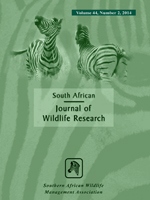There are considerable challenges in the conservation of large carnivores, caused by large area requirements, low reproduction rates and low population densities coupled with their tendency to cause conflict with humans. Trophy hunting is one strategy to increase support for large carnivore conservation. Leopards, Panthera pardus, rank among the most sought-after trophies in South Africa. However, trophy hunting has been suggested as partly responsible for leopard population declines, and leopards are also killed in retaliatory actions. In this study we used a stochastic population model to evaluate the relative influences of retaliatory killing and trophy harvest on leopard population persistence, and to assess the sustainability of the current leopard trophy harvest in South Africa. There was a stronger effect of variation in retaliatory killing than of harvest on population persistence. Although we found low extinction risks for South African leopards within 25 years, high risks of population declines across a wide range of simulation scenarios call for concern regarding the viability of the South African leopard population. We suggest that conflict mitigation may be more effective in promoting leopard persistence than restricting trophy harvest, and that accurate estimates of retaliatory killing are necessary for assessments of harvest sustainability.
How to translate text using browser tools
1 October 2011
The Relative Importance of Trophy Harvest and Retaliatory Killing of Large Carnivores: South African Leopards as a Case Study
Lourens H. Swanepoel,
Peter Lindsey,
Michael J. Somers,
Wouter Van Hoven,
Fredrik Dalerum
ACCESS THE FULL ARTICLE
adaptive management
carnivore
population viability analysis
simulation models
trophy hunting





